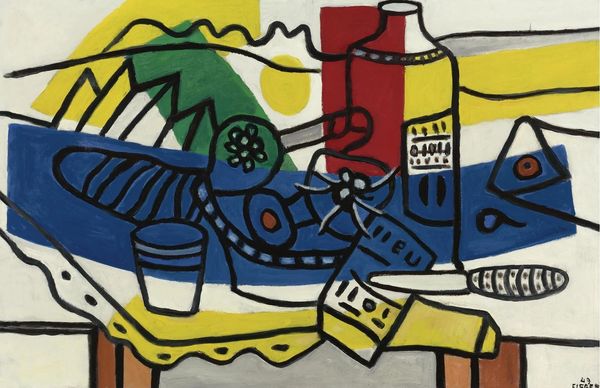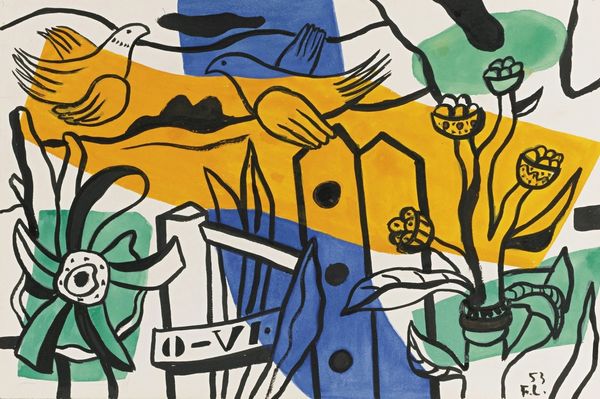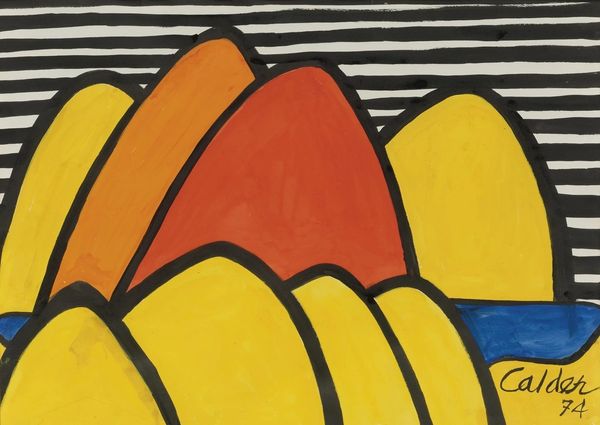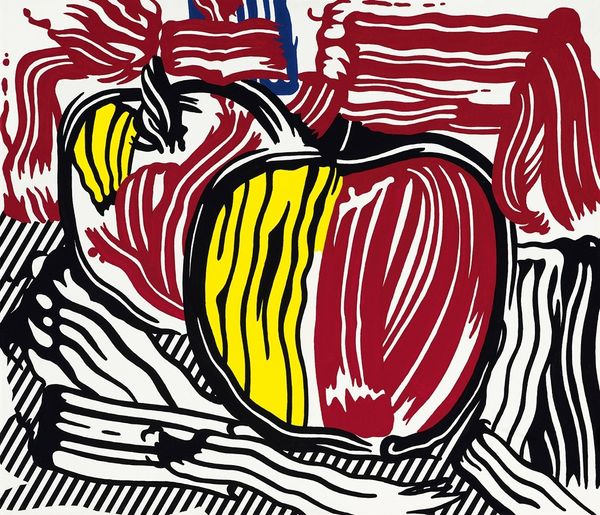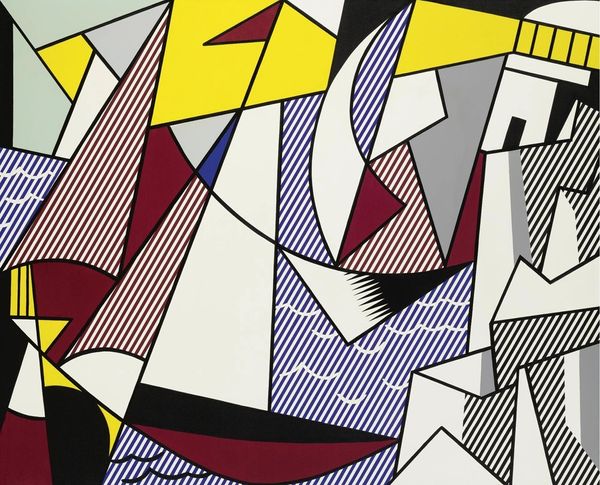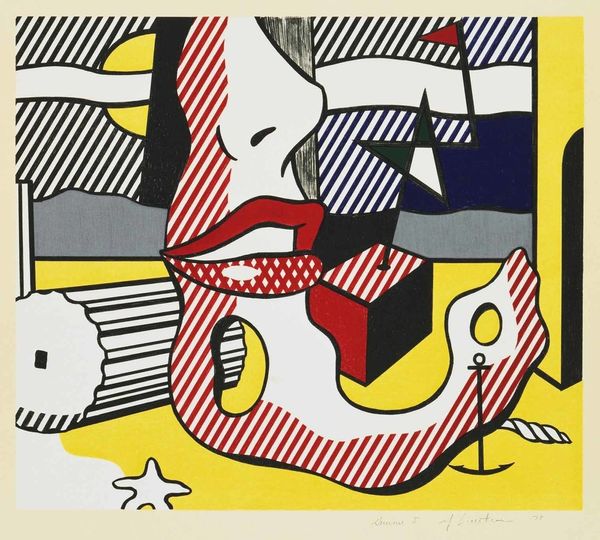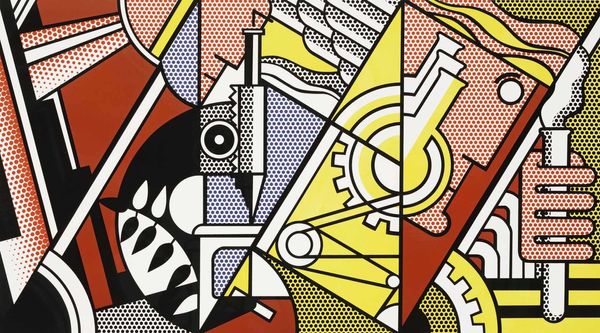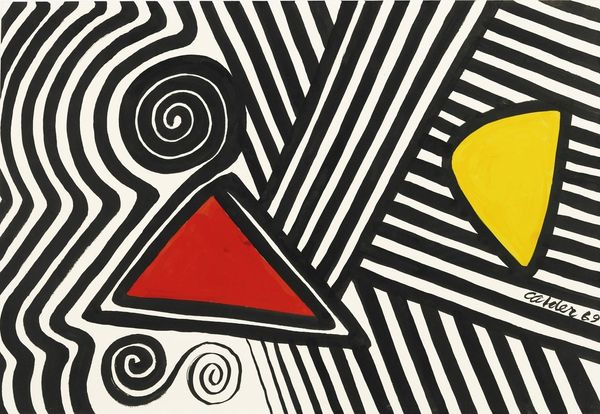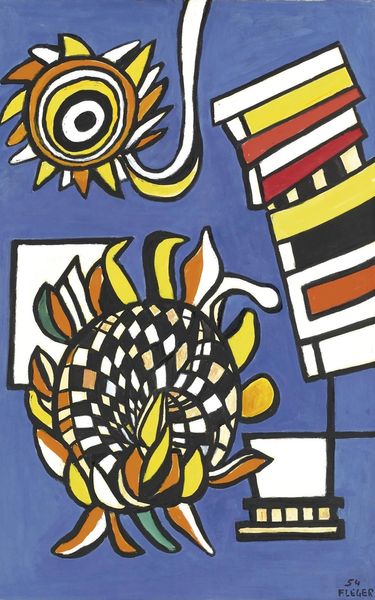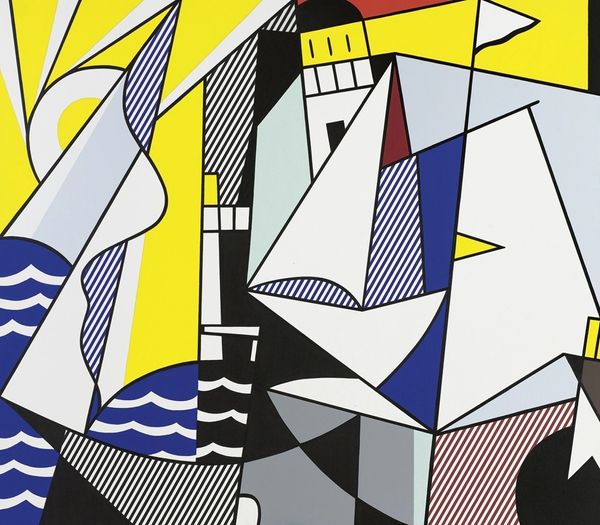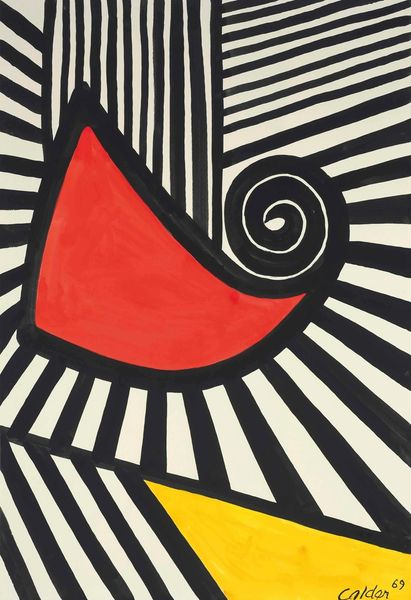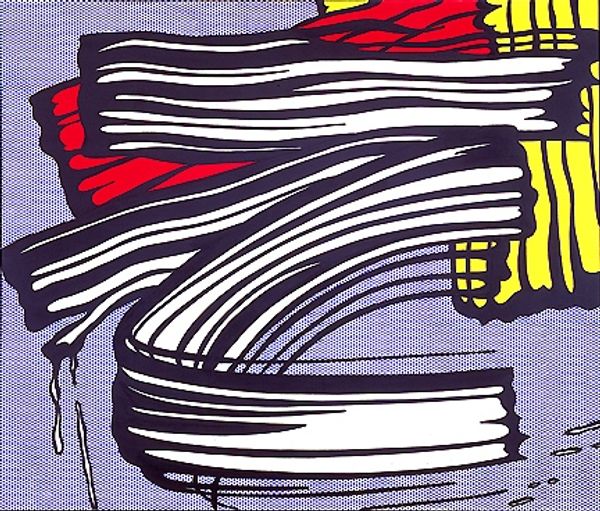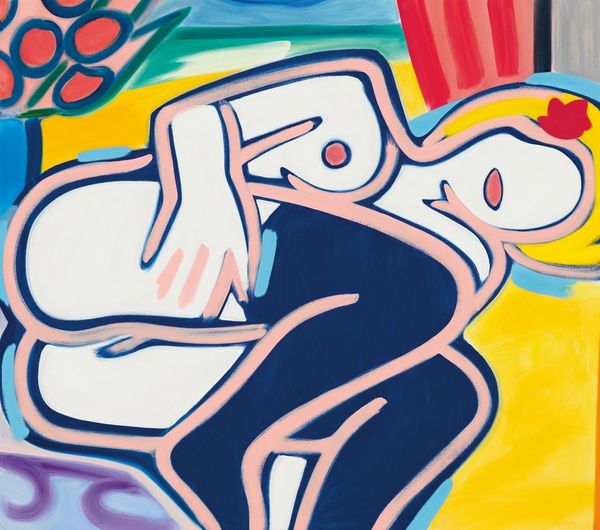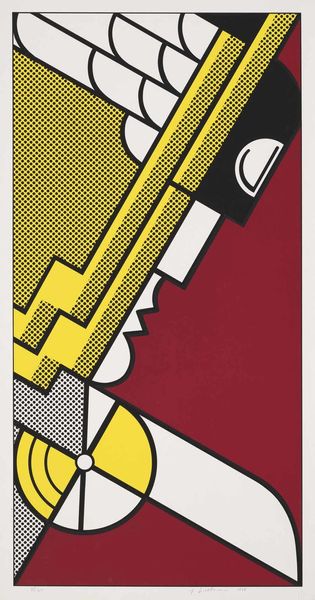
Copyright: Modern Artists: Artvee
Editor: So, this is Roy Lichtenstein’s “Cubist Still Life” from 1974, created using acrylic paint. It feels very… playful, I guess, with these flat planes and bold outlines. How do you read this piece? Curator: Lichtenstein is appropriating and commenting on art history here. "Cubist Still Life," executed in the mid-70s, engages with the history of Cubism, a movement which, early in the 20th century, revolutionized painting by fragmenting objects and space. But Lichtenstein does so through the lens of Pop Art, which is deeply engaged with popular culture and mass media. He’s referencing not just Cubism but *also* its absorption into the visual language of commercial art. Editor: Ah, I see, so it's not just about the style itself, but how that style became part of the wider visual culture? Like a reflection on the public life of art? Curator: Exactly! Think about it: Cubism started as a radical avant-garde movement, challenging established artistic norms. Yet, by the time Lichtenstein is painting this, elements of its visual language, its flattening of space and fragmented forms, had become quite common in advertising and design. He’s highlighting this transformation. Editor: The visual flatness really jumps out at you, more graphic than painterly. The silver feels a bit cold, a deliberate contrast, maybe, to the still life genre? Curator: The flatness, achieved through bold outlines and unmodulated colors, removes any sense of depth or illusionism typically associated with traditional still life painting. The use of industrial materials like acrylic also challenges the notion of artistic originality, highlighting the role of mass production in contemporary society. Do you think that adds to the message? Editor: Definitely. It shifts the focus from individual skill to broader questions about art and its place in society. I appreciate how this work prompts thinking about art's journey from the avant-garde to mainstream. Curator: And how the public’s understanding of imagery evolves, and how the socio-political aspects and movements surrounding art are key to that understanding. It’s more than just a painting of fruit; it's a comment on how we see and consume art itself.
Comments
No comments
Be the first to comment and join the conversation on the ultimate creative platform.
